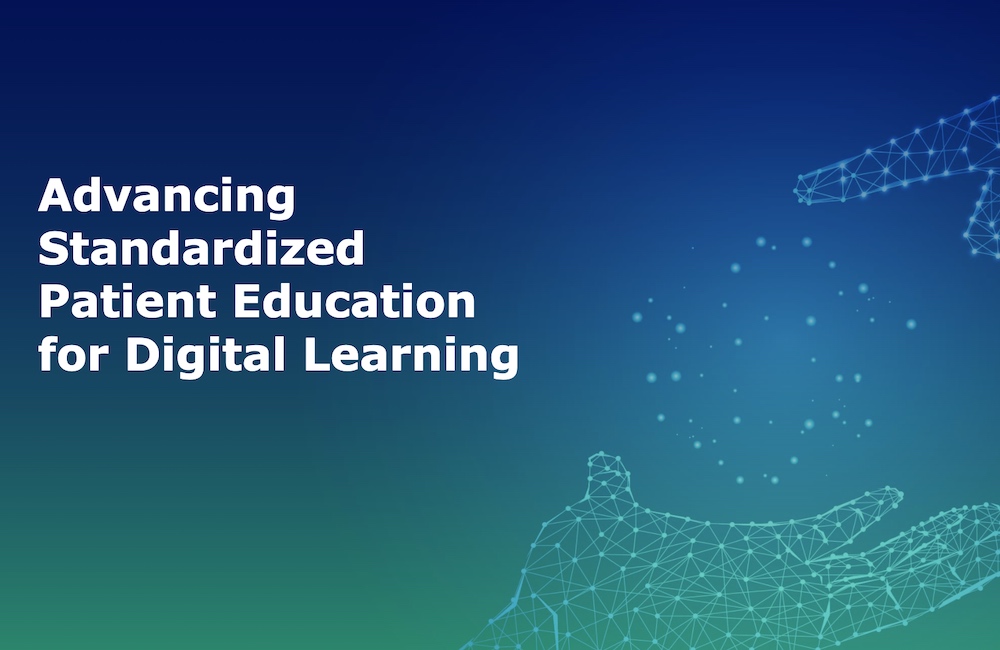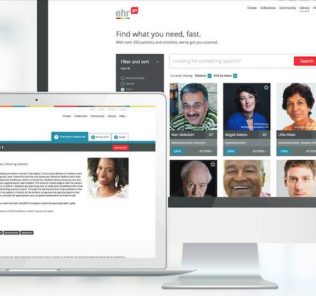SP-ed Advances Standardized Patient Education for Digital Learning
Nearly all United States-based academic centers are now starting to employ standardized patients for training medical learners and licensed health professionals. Plus, as healthcare professionals are working to increasingly engage with patients remotely and within team models in value-based care settings, educators face significant challenges. To help make this process easier, the company SP-ed offers a digital platform that conveniently and efficiently delivers the value of high-quality Standardized Patient-based education to a wide variety of health professionals at all stages of their careers.
SP-ed brings the benefits of standardized patient education to all educators and trainers within healthcare systems, medical centers, and community practices. It uniquely offers real-time standardized patient interactions to any clinician with an Internet-connected device. This is in an effort to improve patient outcomes by fundamentally changing the way they engage with their patients during both in-office and telehealth visits.
The company takes a significant step toward bringing this valuable educational modality into the now tech-enabled, telehealth-focused world. Further, this technology helps permit healthcare professionals from any geographic location to participate in this revolutionary method of learning from their home or office and eliminates the need to travel to a healthcare simulation center.
Sponsored Content:
Best practices are followed in all phases of the development of the educational programs associated with SP-ed through trained Standardized Patients (SP) accessible to any clinician with a computer or smartphone. This method provides a safe, controlled setting in which participants have the opportunity to benefit from this human interaction to master clinical, telehealth, and interpersonal skills and increases their confidence in many aspects of care delivery.
All SP-ed offerings are built on an award-winning innovative educational technology platform that has been used by medical educators for over twelve years to design, publish, and analyze over 5,000 health professional programs with a focus on engagement, measurement, and impact. Clinicians can initiate SP sessions in a variety of ways, including through:
- Email or SMS Invitations
- Online Scheduling Forms
- Within Digital Education or Training Modules
- On-site Kiosks at Conferences & Symposia
According to SP-ed, the human interaction that is integral to Standardized Patient-based education has an increasingly important role in health professional education, training, and professional development and has been previously limited by the constraints of time and location. The traditional educational models are not well suited to address many of the “hard to teach” skills that are now critical for a successful practitioner. Fortunately, SP-based education can be extremely useful in improving skills in the following areas:
- Verbal and non-verbal communication
- Listening
- Video visit (telehealth)
- Speaking with an unhappy patient
- Talking about adherence
- Discussing social determinants
- Tailoring management for patient-specific needs
- Shared decision-making
The SP-ed platform is a turnkey digital offering with a robust set of features including a network of experienced professionals. A growing nationwide network of experienced SPs and trainers are enrolled in SP-ed, with our fully integrated application and validation process. Another feature is the automatic communications between users. A synchronized scheduling notification, and alert system between clinicians, SPs, trainers, observers, and administrators. Here are additional features:
Sponsored Content:
- Experienced Observers On-hand: Highly experienced observers review recordings and score sessions with customized scorecards.
- Video Conferencing Platform: A highly utilized video conferencing platform that can be used across a variety of devices.
- Automated Scorecard Delivery: Customized scorecards are seamlessly delivered to each participant post-session.
- Financial Reporting System: An integrated financial reporting system tracks usage across an organization.
- Personalized Dashboards: Personalized clinician, SP, trainer, observer, and administrator dashboards
- Integrated Authoring Tools: Add to the ready-to-use patient scenario library by utilizing award-winning authoring and publishing tools.
Want to create a Standardized Patient Scenario?
Fill out the SP-ed Scenario Authoring Application
Ultimately, with the exponential increase in telemedicine and the focus on incorporating shared decision-making practices into each patient encounter, SP training will be a unique and valuable component of professional development with benefits that include:
- Case-based Learning: Brings to life the didactic and case-based learning.
- One-to-one Training: Offers one-to-one training within an efficient, scalable & cost-effective model.
- Telehealth Practice: Allows clinicians to safely and conveniently practice their telehealth skills from any location.
- Extended Interaction: Meaningfully extends telehealth training beyond technical platform mastery.
- Focus on Individualized Care: Encourages reflection and increased interest in delivering individualized care to their patients.
- Improved Retention: Improves the overall impact of the time invested in training and education.
Upcoming Standardized Patient Presentation/Breakout Sessions at HealthySimulation.com‘s Champions of Simulation Virtual Symposium April 13th
To further advance the conversation of healthcare simulation, HealthySimulation.com is thrilled to announce the “Champions of Simulation” Virtual Symposium on April 13, from ~8 AM to 4 PM PDT, UTC-7. This exciting virtual event will include over 18 sessions with presentations from more than 20 industry experts. One of these presenters will be Debra Nestel, AM Ph.D. FSSH FAcadMed, Professor at Monash University & University of Melbourne. Her presentation will be held from 2:30 PM – 3:30 PM PDT (1 Contact Hour).
Interprofessional simulation is core to the work of many simulation practitioners. After brief navigation of some of the complex language around interprofessional, the presenter will offer an overview of mainstream practices before outlining less common applications. She will then discuss the benefits and challenges of various approaches – considerations in educational design, sequential simulations, getting observers involved, co-debriefing, and much more, including a look to the future. Finally, the presenter will also share resources that have informed the lecture content. Learning objectives include:
- Define key terms associated with the interprofessional practice.
- Discuss contemporary interprofessional simulation practices.
- Identify benefits and challenges of interprofessional simulation practices
Join live on the day to ask questions from some of the world’s leading experts, and/or rewatch any session as much as you like for 3 months following the event by registering now — but hurry — early-bird ends March 16th!
SP-ed Clinical Simulation Scenario Examples
Burnout Scenario with an SP allows learners to:
- Practice how to empathetically approach a team-member
- Explore how burnout is affecting their life
- Help design a personalized approach to help
A shared decision-making scenario with a standardized patient allows clinician learners to:
- Practice how to empathetically interact with a patient
- Explore how the chief concern is affecting their life
- Take a detailed medical and social history
- Elicit patient’s preferences
- Help create a personalized treatment plan
A telemental health scenario with an SP allows learners to practice telehealth etiquette:
- Establish Environment & inform the patient about privacy & security
- Adapt in-person non-verbal communication skills to Telehealth
- Ensure equipment is set up for effective Telehealth interaction
- Assess the state of mind – using mental health screening tools
- Discuss a safety plan & suggest community resources
Learn More About SP-ed
Lance Baily, BA, EMT-B, is the Founder & CEO of HealthySimulation.com, which he started while serving as the Director of the Nevada System of Higher Education’s Clinical Simulation Center of Las Vegas back in 2010. Lance is also the Founder and acting Advisor to the Board of SimGHOSTS.org, the world’s only non-profit organization dedicated to supporting professionals operating healthcare simulation technologies. His co-edited Book: “Comprehensive Healthcare Simulation: Operations, Technology, and Innovative Practice” is cited as a key source for professional certification in the industry. Lance’s background also includes serving as a Simulation Technology Specialist for the LA Community College District, EMS fire fighting, Hollywood movie production, rescue diving, and global travel. He and his wife Abigail Baily, PhD live in Las Vegas, Nevada with their two amazing daughters.
Sponsored Content:


















